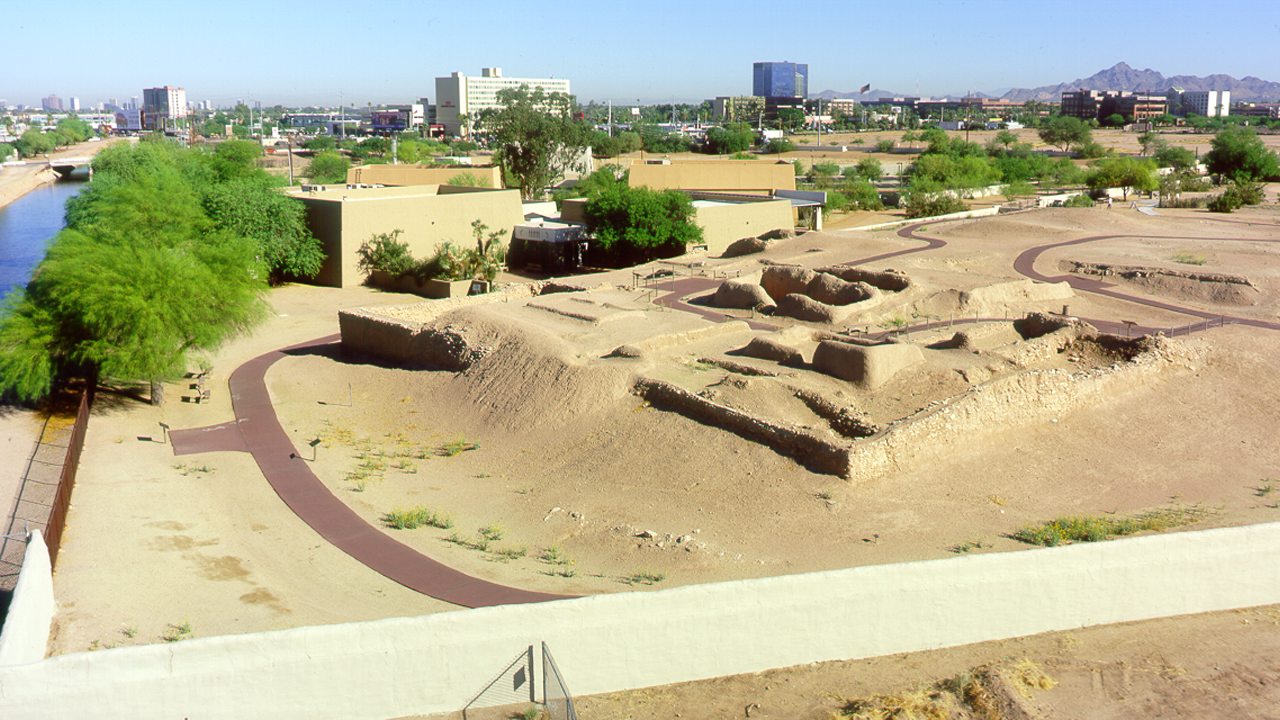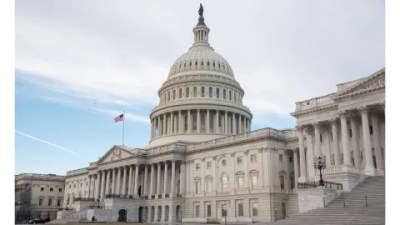
What’s in a name? The language we use tells us who is speaking, from what perspective, and (implicitly), who controls the narrative. Names, in short, have power. Today on the blog, Caitlin Dichter, Exhibit Designer, & Nicole Armstrong-Best, Museum Administrator, tell us how and why the collection of pre-contact archaeological sites previously known as the Pueblo Grande Museum is now the S’eḏav Va’aki Museum. It turns out that two-word shift is about much more than a name: it signals volumes about power, authority, and respect.
To explore museums’ evolving relations with descendant communities, download AAM’s new report, The First Horizon: Understanding the State of Voluntary Repatriation, Restitution, and Reparations Today.
–Elizabeth Merritt, VP Strategic Foresight and Founding Director, Center for the Future of Museums
For more than a decade, the S’eḏav Va’aki Museum—a collection of pre-contact archaeological sites formerly known as the Pueblo Grande Museum and managed by the City of Phoenix, Arizona—has consulted monthly with the Tribal Historic Preservation Offices (THPOs) of two Indigenous communities in the region: the Salt River Pima-Maricopa Indian Community (SRPMIC) and Gila River Indian Community (GRIC). While these consultations began as compliance-focused dialogues on citywide archaeology, over time they have shifted toward broader discussions as our partners have gotten more comfortable giving input on a wide variety of topics.
As these conversations began to change our approaches, in 2018 the museum worked to create a new mission that better reflected a focus on O’Odham perspectives (the primary tribe in the region) and allowed more space for cultural exploration in addition to the scientific archaeology that had previously dominated. One of our first actions under this new mission was to review and redo the signage interpreting the features of our site, with particular emphasis on the platform mound (va’aki). Funding for the project came from a National Heritage Partners grant, which required formal consultation with affiliated and associated tribes. As a result, the museum deepened our collaboration with the THPOs, consulting with them for the first time on interpretive messaging.
To facilitate this process, we hired an outside consultant with deep connections to the tribal community and a background in ethnohistory. Thanks to this consultant’s connections to the community, including work on mitigation measures related to the expansion of Phoenix’s 202 Freeway cutting through South Mountain Park (a traditional cultural property), we ended up adding another component to the project. We worked with our partners to develop a “Homeland Map” highlighting traditional place names and important cultural locations in O’Odham, which was installed at the museum in 2022 and approved to be used at other locations within the City of Phoenix.
Later that year, at a regular monthly consultation meeting, the museum reengaged a discussion that had begun in the process of changing our mission: whether we should also change our name to reflect our new focus. Barnaby Lewis, a GRIC elder, submitted eight possible names for consideration, with the final decision left to the representatives from SRPMIC. In early 2023, one of those representatives presented their choice of S’eḏav Va’aki Museum, along with perspective on the importance of changing the name, to the governing body of the museum, the City Parks and Recreation Board, which ultimately approved the change in March. Since then, the museum has been hard at work changing its name on its signage, web presence, social media, and all collateral materials.
In the meantime, our newest exhibits on display exemplify the changing ethos at S’eḏav Va’aki Museum. Sending Their Ancestors Home, a passion project of our tribal partners, discusses the Native American Graves and Repatriation Act (NAGPRA) thirty years later and confronts the museum’s complicity in the display of human remains. While staff wrote the initial script, all elements of the exhibition went through consultation. As we continue on this journey of healing, it was important to us that we acted as facilitators for the tribes to be able to tell their story. Equally vital, both to the tribes and our own team, was not shying away from the hard truths of our past. Being a City of Phoenix entity, the museum must acknowledge our inadequacies while also celebrating the changes we’ve undertaken to do better.
This led into our second new exhibit, What’s In Our Name?, which focuses on the museum’s name change, our shift in philosophy reflected in our mission statement and interpretive signs, and our ongoing interpretive plan redesign. Both of these exhibits show our past, the steps we’ve taken to improve our present, and a vision of an even better future based on collaboration and respect.
As our trusting relationship with the tribal communities begins to permeate throughout our operations, it is also starting to spill out beyond the boundaries of the museum, to other areas of the city government. For instance, we are now facilitating discussions for the Parks Department regarding renaming trails and picnic areas with offensive or inaccurate names. This effort has also expanded into artistic elements, such as new trail signage and appropriate, culturally significant artwork embellishing outdoor park amenities. We have also been involved with the Housing Department, where our staff’s City Archaeologist has been facilitating discussions on appropriate mural art, and the City Office of Arts and Culture, where our Museum Administrator has been contributing to language for calls to artists when there is a tribal connection. Museum staff are also tasked with talking to the media about the overall change in philosophy and how it affects the museum, the community, and beyond.
As rewarding as these outcomes have been, embarking on this journey of co-stewardship is neither simple nor free from misunderstandings. Sharing authority in decision-making within a municipal context, outside of established law, requires constant dialogue, active listening, appropriately managed communications, and a big dose of humility. In some cases, issues that staff had not considered controversial turned out to be so, and thus we’ve needed to build in an extended consultation timeline for those projects. To manage these areas of concern more proactively in the future, at a global level instead of project by project, the museum is considering creating a more formal agreement with the tribal communities. This work remains to be completed.
We’ve also been challenged by the fact that, like most museums, S’eḏav Va’aki is short-staffed. Our capacity is particularly limited since we are tasked with duties beyond the boundaries of basic museum operations, such as managing the City of Phoenix archaeological compliance program. With the expanded responsibility of tribal consultation outside of antiquities laws and NAGPRA, the time commitment has grown exponentially. The Museum Administrator is in discussion with city management regarding the best way to continue the work while ensuring that it is better resourced.
Our effort reinterpreting the site and museum is far from completed. Now that we have laid the foundations for a new direction, we are looking forward to creating tighter bonds of trust and partnership with S’eḏav Va’aki’s descendant community and enriching our visitors’ understanding of the site and overall experience at the museum. This reparative practice is leading us on a journey that will never truly end. It is hard work, but good work, and we proudly take it on.
Skip over related stories to continue reading article







Thank you for this careful description of the process underlying this important and timely change.